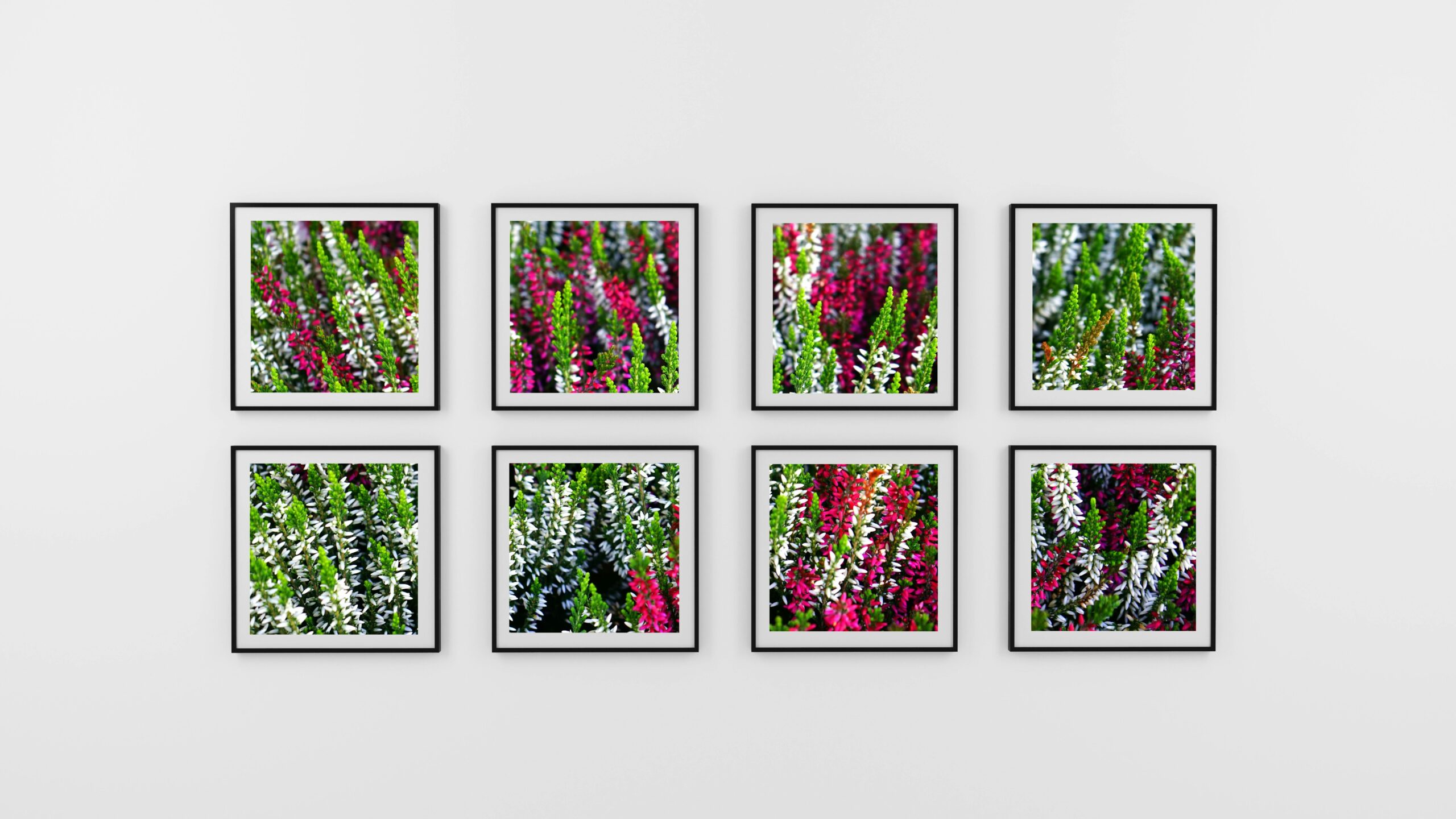A gallery wall transforms an ordinary space into a personalized showcase of your style and memories. Whether you’re looking to display family photos, art pieces, or a combination of both, creating an effective gallery wall requires thoughtful planning and execution. In this guide, we’ll walk through the essential steps of selecting meaningful art pieces, choosing complementary frames, planning creative layouts, and properly hanging your pictures for a professional-looking display that will enhance any room in your home.
Selecting Art for Your Gallery Wall
Creating a cohesive gallery wall begins with thoughtful art selection. The most engaging gallery walls tell a story or reflect your personality, so choose pieces that resonate with you personally. Consider mixing different mediums such as photographs, paintings, prints, and even three-dimensional objects for visual interest. When planning your art display tips, remember that contrast creates visual excitement. Try pairing modern abstract pieces with vintage photographs or combining black and white images with colorful art. The key is finding a unifying element—perhaps a consistent color palette, theme, or frame style—to tie everything together. Many interior designers recommend gathering about 30% more pieces than you think you’ll need, allowing for flexibility when finalizing your arrangement.
Choosing the Right Frames
Frames play a crucial role in how you arrange pictures wall displays, serving as both protective housing for your art and design elements in their own right. You have two main approaches when selecting frames: uniformity or diversity. Matching frames create a clean, cohesive look ideal for formal spaces or when displaying similar types of art. Alternatively, an eclectic mix of frame styles, colors, and thicknesses adds character and visual interest, perfect for more casual or creative environments. When mixing frame styles, consider maintaining one consistent element—perhaps all wood tones or all black frames in different profiles—to maintain some unity. Quality matters too; invest in frames with proper backing and, for valuable pieces, consider UV-protective glass to prevent fading from sunlight.
Planning Your Gallery Wall Layout
Before hanging a single frame, planning your gallery wall layout ideas is essential for achieving the perfect composition. Start by determining the overall shape and size of your gallery wall—will it fill an entire wall or just a portion above furniture? Next, consider the spacing between pieces; the standard recommendation is 2-3 inches, though contemporary arrangements sometimes feature tighter spacing. For layout planning, try the floor-first method: arrange your framed pieces on the floor, experimenting with different configurations until you find one that pleases your eye. Alternatively, cut paper templates of each frame and tape them to the wall with painter’s tape, allowing you to visualize the arrangement in place before committing. According to design experts at AskHomey, the most successful gallery walls often balance symmetry with asymmetry, creating a dynamic but harmonious visual effect.
Basic Gallery Wall Arrangement Styles
Several classic arrangement patterns can guide your design decisions when you’re ready to hang gallery wall elements. The grid pattern, featuring uniformly sized frames in neat rows and columns, offers a formal, museum-like aesthetic perfect for collections of similar pieces. A salon-style arrangement, with frames of various sizes clustered closely together, provides a more eclectic, collected-over-time appearance. For those who prefer more structure without strict symmetry, try a linear installation with frames aligned along one or more edges while varying in size and orientation. Another popular approach is the center-focused layout, which places a dominant piece at the center with smaller pieces radiating outward. Remember that these are starting points—the best arrangements often combine elements from different styles to create something uniquely suited to your space and collection.
How to Hang Your Gallery Wall
The actual process of how to hang gallery wall pieces requires patience and precision. Begin by establishing a baseline—usually aligned with eye level, approximately 57-60 inches from the floor to the center of your arrangement. For each piece, measure and mark the exact hanging point, accounting for wire placement or hanging hardware. Use a level to ensure straight alignment, and consider using picture hanging strips or hooks rated for the appropriate weight. For heavier pieces, locate wall studs or use wall anchors to prevent damage. Work from the center outward when hanging multiple pieces, checking your spacing as you go. Take your time with this step—rushed hanging often results in unnecessary wall damage and frames that require frequent adjustments.
Maintaining and Evolving Your Gallery Wall
A truly successful gallery wall isn’t static—it evolves over time as your collection and tastes change. Plan for periodic refreshing of your display, perhaps seasonally or annually. When dusting frames, use a microfiber cloth and avoid spraying cleaners directly onto frames or glass. Consider how lighting impacts your display; picture lights or strategically placed accent lighting can dramatically enhance the visual impact of your arrangement. And remember that gallery walls can be dynamic—leave room for growth by planning empty spaces where new treasured pieces can eventually find their home.
For more tips and to connect with reliable home service professionals, follow AskHomey on Facebook and Instagram.



